Ministry of Statistics & Programme Implementation
Release of Publication “Women and Men in India 2023”
प्रविष्टि तिथि:
12 AUG 2024 5:31PM by PIB Delhi
Ministry of Statistics and Programme Implementation (MoSPI), Government of India, released the 25th issue of its publication titled “Women and Men in India 2023”.
The publication is a comprehensive and insightful document that attempts to bring a holistic view of the situation of women and men in India and provides data on a wide range of topics such as Population, Education, Health, Participation in Economy, Participation in Decision making etc. among others. It presents data disaggregated by gender, urban-rural divide, and geographical region, which helps to understand the disparities that exist between different groups of women and men. The publication includes important indicators as derived from published official data of different Ministries/Departments/Organizations.
“Women and Men in India 2023” not only highlights the progress made towards gender equality but also identifies the areas where significant gaps remain. By examining various socio-economic indicators, the publication offers some analysis of trends over time, thereby enabling policymakers, researchers, and the general public to make informed decisions and contribute to the development of gender-sensitive policies.
The report is a crucial resource for understanding the demographic changes and their implications for both women and men in India. It serves as a vital tool for advocacy and action to promote gender equity and ensure that development efforts are inclusive and sustainable.
“Women and Men in India 2023” is available at the website of the Ministry (https://mospi.gov.in/).
Some of the highlights of the publication are as follows:
- By 2036, population of India is expected to reach 152.2 Crore, with a slightly improved female percentage of 48.8% as compared to 48.5 percent in 2011. The proportion of individuals under 15 years is projected to decrease from 2011 to 2036, likely due to declining fertility. Conversely, the proportion of the population aged 60 years and above is anticipated to substantially increase during this period.
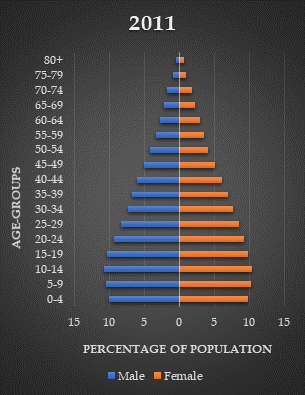
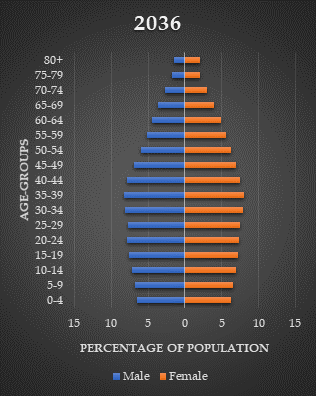
- India's population in 2036 is expected to be more feminine compared to the 2011 population, as reflected in the sex ratio which is projected to increase from 943 in 2011 to 952 by 2036, highlighting a positive trend in gender equality.
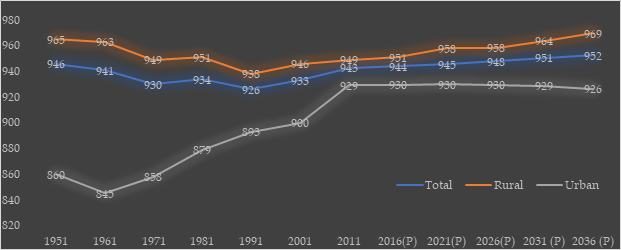
- It is evident that from 2016 to 2020, Age Specific Fertility Rate in the age group of 20-24 and 25-29 has reduced from 135.4 and 166.0 to 113.6 and 139.6 respectively. The ASFR for the age 35-39 for the above period has increased from 32.7 to 35.6 which shows that after settling in the life, women are thinking of expansion of family.
- Adolescent Fertility Rate was 33.9 for illiterate population whereas 11.0 for the literate in 2020. This rateconsiderably lower for even those who are literate but without any formal education (20.0) as compared to illiterate women reemphasizing the importance of imparting education to women.
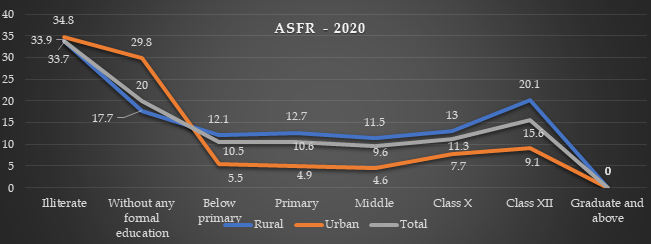
- Maternal Mortality Ratio (MMR) is one of the SDG indicators and to bring it down to 70 by 2030 is explicitly laid down in SDG framework. Owing to ceaseless efforts by the Government, India has successfully achieved the major milestone of bringing down its MMR (97/lakh live births in 2018-20), well in time and it should be possible to achieve the SDG target as well.
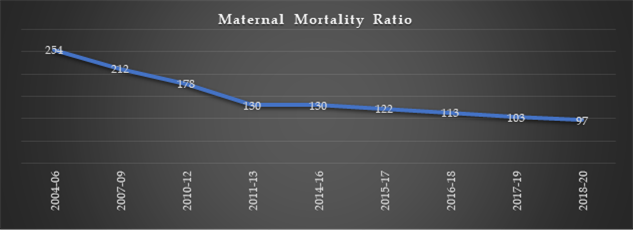
- Infant Mortality Rate has been decreasing over the years for both male and female. Female IMR had always been higher than that of male but in 2020, both were equal at the level of 28 infants per 1000 live births. The Under 5 Mortality Rate data shows that it has decreased from 43 in 2015 to 32 in 2020. So is the case for both boys and girls and the gap between boys and girls has also reduced.
- As per the Periodic Labour Force Survey, Labour Force Participation Rate of the persons aged 15 years and above has been increasing from 2017-18 onwards for both male and female population. It is seen that male LFPR has gone from 75.8 to 78.5 during 2017-18 to 2022-23 and female LFPR has gone from 23.3 to 37 during the same period.
- Up to the 15thNational Election (1999), less than 60% of women electors participated, with men's turnout being 8 percentage points higher. However, the 2014 elections marked a significant change, with women's participation increasing to 65.6%, and further rising to 67.2% in the 2019 elections. For the first time, the voter turnout percentage was marginally higher for women, highlighting the impact of increasing literacy and political awareness among women.
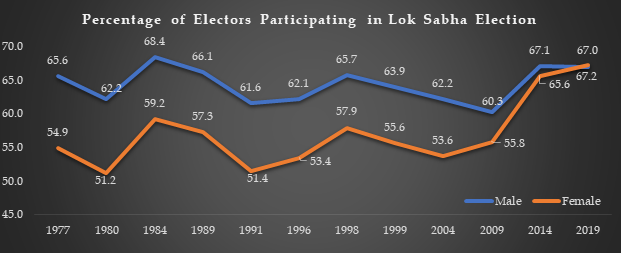
- The Department for Promotion of Industry and Internal Trade (DPIIT) has recognized a total of 1,17,254 start-ups since its inception in January 2016 up to December 2023. Among these, 55,816 start-ups are led by women, constituting 47.6% of the total recognized start-ups. This significant representation underscores the growing influence and contribution of women entrepreneurs in India's start-up ecosystem.
***
SB/DP
(रिलीज़ आईडी: 2044607)
आगंतुक पटल : 30215